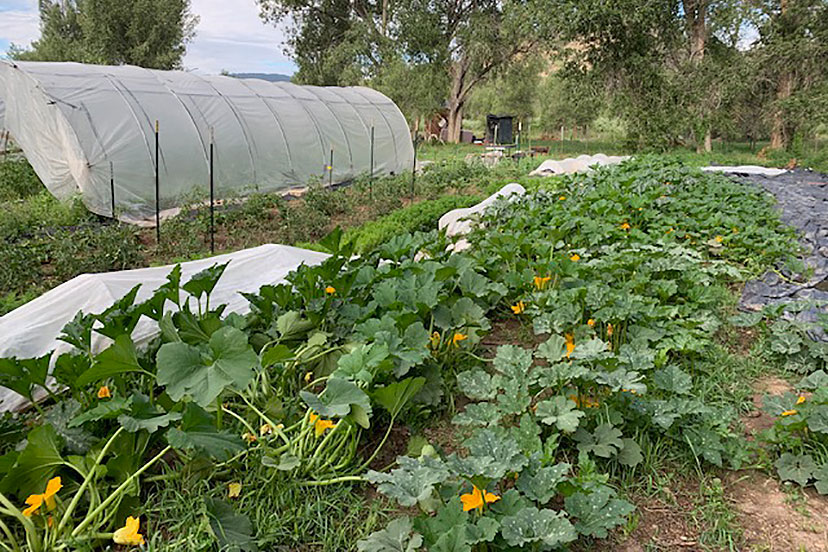PHOTO: Terra Walk Farm, Archuleta County.
By Chris Frederics
If you were to take a road trip riding the spine of the ‘congenital divide’, you’d be hard pressed to buy locally raised food all along the way. There are some who would aim to do, this but most would not even consider it possible.
I am uniquely aware of this challenge, because I have tried it… twice.
Before turning my full time career towards regenerative agriculture, I was a teacher at a school where traveling with students was an integral part of the curriculum. Each semester, teachers were expected to lead at least one trip with students to enrich the classes they were teaching. Primarily, I taught secondary science, but I also taught agriculture. It is with my agriculture students that I found myself trying to feed groups of students entirely locally as we traveled across Colorado. This was a goal that students came up with and, impressively, they did their damndest to abide by.
You have to respect (and try to remember) the dedication of young people’s willingness to test themselves in extreme ways. I was impressed by these students who, at times, chose hunger over tortillas and peanut butter. (Of course we were also on a budget. This made the challenge that much more interesting.)
Ultimately, we always cheated. It was in the first moment of cheating that one of the most valuable learning experience occurred. These dedicated students painfully learned how sparsely connected Colorado’s local food system is. I can only speak for myself, but this moment also seemed to make cheap food taste worse.
Fortunately, the goal of the trip was to visit farms. We could stock up while visiting a farm… until we got to the next farm. The generosity of small scale farmers often shined through. We would often be offered this food on the cheap or free. But still we failed beautifully.
Put this story up against the backdrop of the latest social disturbance of your choice…. (pandemic, inflation, political divisiveness, western water issues, natural disasters in California, and on and on), it is clear we need more robust local food systems.
In a high altitude climate with a short growing season, it can be easy to have doubt that a robust local food system is possible. None of us hate to be wrong, but the reason that I am writing is to quell your doubts. It is possible. In fact local food IS available to you right now!
Many farming technologies that have been out of reach of the small scale producers, have become affordable in the last 25 years. Protecting plants and animals from harsh winters and small equipment that vastly increases efficiency has made farming with mostly hand tools possible. It is also profitable.
Boiled down, there are two major community wide changes that would make locally produced food a dinner time possibility for everyone. Thanks to the basic principles of economics, if these changes are widely accepted, this food would also become cheaper.
First, we need more farmers. According to the USDA, the average age of a farmer is 58. No matter the scale of the farm, without farmers we won’t have food. In this scenario, robotics better come along fast. Let’s make food production a primary teaching in all public schools and develop career pathways for all types of learners.
Second, the local food system would greatly benefit if the middle income and high income citizens of all communities spent more of their budget on local farm products. This is where basic economics comes into play. If demand for local farm products increases, the price of local food will come down. This would make it cheaper and more available to those with a smaller budget. If these two things don’t happen, the future of local (and possibly non-local) food seems grim.
Speaking of which, I’d like to share that my farm is currently selling farm shares (CSA memberships) right now. If you are interested, please click here to learn more about the Terra Walk Farm.
In my next article, I aim to share the landscape of local food in Archuleta County. Meat products, veggies, gourmet mushrooms, and honey are available to you now. In my next article, I hope to highlight some of the food producers of this county and their stories. I invite you to know your local farmers. The ones that I know care deeply for you, your family and friends. They grow delicious food and want to share it with you.

